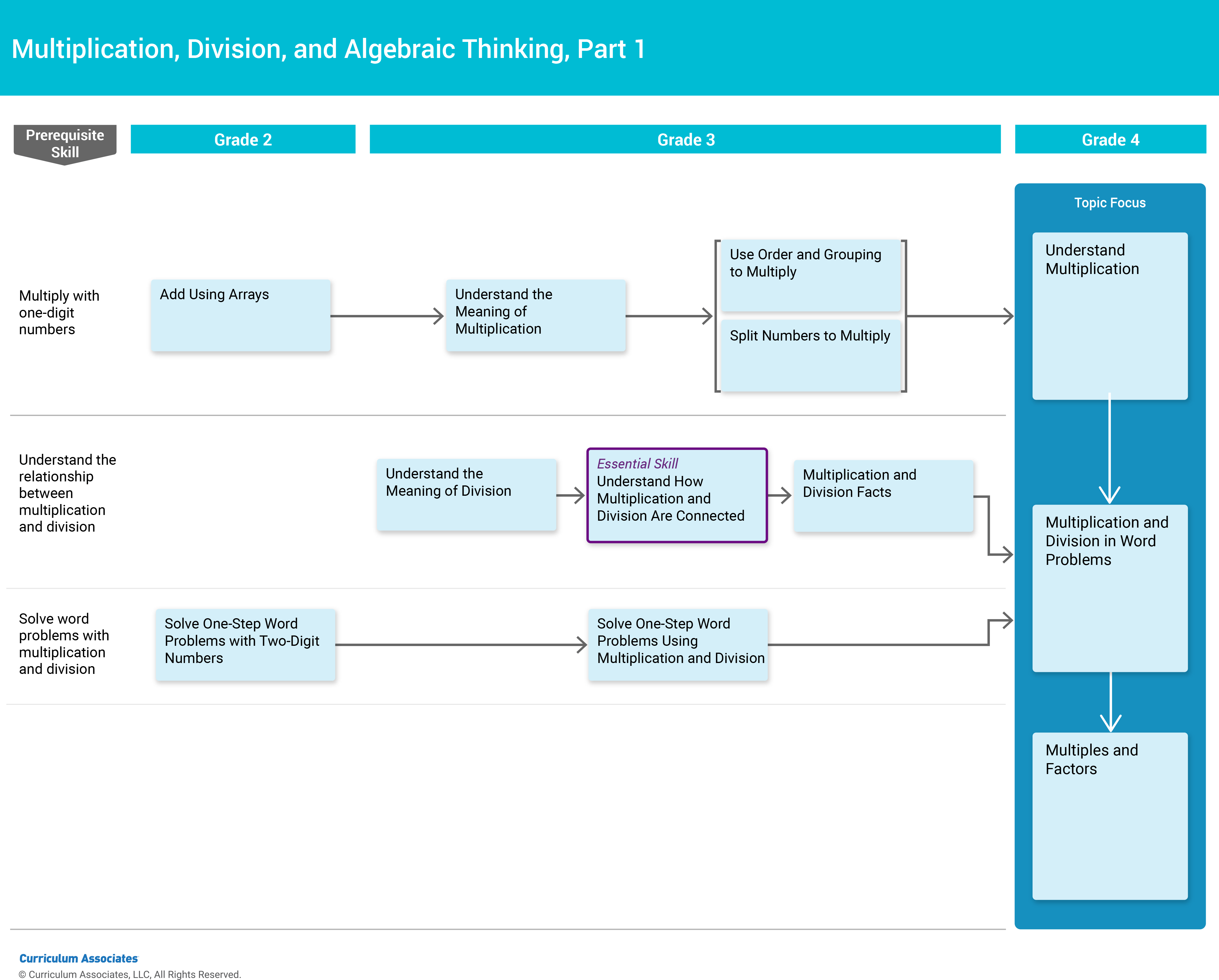
How Do We Know Our Students Are Learning? And If Not, What Can We Do about It?
2-min. read
4-min. read
By: Molly Spalding

One surefire way to address unfinished learning with your math students is by understanding and using the natural coherence and progression of math concepts in your classroom.
Coherence is the idea that broad math concepts connect to one another—basically, it’s thinking holistically about math. When you introduce math skills in a way that allows your students to see those connections, they learn how to build off the content they already know. The logical progression of coherence lays the foundations for work in later grades. For example, in fourth grade, students use previously learned skills to multiply a fraction by a whole number. This extends to fifth grade when students build on that more complex skill to multiply a fraction by a fraction.
You can build coherence both vertically (i.e., connect topics across grades) and horizontally (i.e., topics students learn within a grade level that are also logically connected).
Coherence is an integral part of teaching math because it helps students understand the concepts more deeply while making complex topics easier to grasp. Try taking advantage of math coherence to help you uncover and target any skills that students need additional support in learning.
The chart below shows how fourth grade skills build on concepts learned in earlier grades. To be successful in the lesson Multiply by Two-Digit Numbers, students need to do well on previously taught Grades 2–4 skills. By tracing a standard back to its logical roots, you can see how the concepts you’re teaching now were addressed in preceding standards. It also helps you identify any content limits, such as what numbers or models your students used in previously learned standards. From this, you can flesh out places to integrate those prerequisites to support what you’re teaching.

Try sneaking unfinished learning skills into a few of your lessons by:
Using a coherent curriculum makes it easier to adapt lessons and address unfinished learning. Check out the following examples to see how various features of a coherent curriculum can help you address prerequisite and grade-level needs.
Visual learning progressions help you identify the coherence of standards across grade levels. They also serve as a visual representation of how previous concepts are built upon and relate to current grade-level concepts. Based on the needs of your students, you can seek out resources to address prerequisite skills and concepts in small groups or with the whole class. If your entire class needs a refresher, incorporate some prior learning into your lessons to keep your pacing on track.
Start each class with an activity that engages students in previous learning directly related to the problems in the day’s instruction. This intentional choice of content for bell-ringer activities helps students feel successful as they begin the lesson and understand how content they learned previously relates to new skills or concepts.
Add time for in-depth exploration and refinement into your instructional design.
Following a coherent curriculum will make it easier to adapt lesson content to address prerequisites in your lessons. Knocking out unfinished learning skills isn’t easy, but coherence is an important tool that can help.
For more examples, AchieveTheCore.org has interactive coherence maps for specific grades and domains or check out this helpful podcast about making math magical.

2-min. read

2-min. read

2-min. read